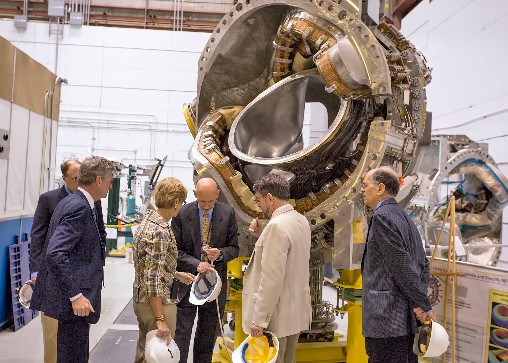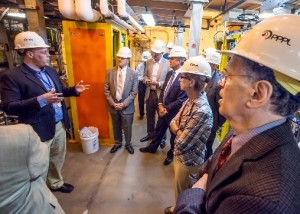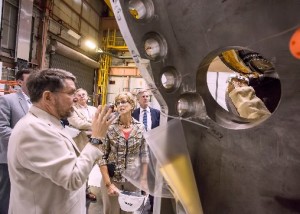
ASP Board Members and Staff Visit Princeton Plasma Physics Lab
On Monday, May 18, members of ASP’s Board, including former Governor of New Jersey and Administrator of the EPA Christine Todd Whitman, American Security Project Board President and President of McLarty Associates Nelson Cunningham, and senior national security experts Vice Admiral Lee Gunn, USN (Ret.), Brigadier General Stephen Cheney, USMC (Ret.), and Senior Fellow Andrew Holland visited Princeton Plasma Physics Lab (PPPL) to discuss fusion as an integral component of our energy security.

The meeting started with Stewart Prager, the Director of PPPL giving a presentation on on the importance of fusion energy research for long term. It will be safe, clean, and secure, providing “always on” base load power, without any harmful emissions.
Dr. Prager emphasized that important work has been done, and the scientific basis is now there for an accelerated fusion research and development program, leading eventually to a pilot fusion energy plant. He said that, given significant increases in funding, there is a path in which the US can build a plant to provide demonstration levels of fusion power within 10-15 years. However, he emphasized that the US is not currently on this path, and has no plan for fusion energy development, unlike our competitors in Europe, China, South Korea, and elsewhere. 
Dr. Prager went on to explain the role that Princeton Plasma Physics Laboratory has played in fusion energy research, showing how the TFTR laid the basis for fusion research in this country, showing how a tokamak could produce 10 MW of fusion power. Today, the NSTX (National Spherical Tokamak Experiment) has just completed its upgrade, and will be operational this summer. But, he also showed that there’s a great deal of other work beyond the main experiment at PPPL, including a liquid wall experimental tokamak and other experiments. PPPL is playing a leading role in research and development into fusion science, and will continue in that role.






